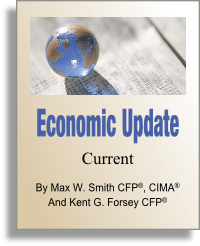
Second Quarter Performance
As the quarter ended, Greece and China were making all the headlines. Greece for their June 30th default on a debt payment to the International Monetary Fund and China for their very sharp short-term stock market decline and surprise interest rate cut. And oh yea – Puerto Rico announced it would be unable to fully repay its municipal debts.
Despite these dramatic events unfolding at the end of the second quarter, the quarter was generally flat to positive for investors in diversified portfolios. U.S stocks saw small to mild gains in some sectors
and losses in others. Most portfolios benefited from exposure to developed international and emerging-market stocks which outperformed U.S. markets through the first six months of the year. Despite issues related to Greece, European stocks gained 5.2% for the year through June 30th
Diversification in fixed income was also a key as core bonds declined in the second quarter (Treasury related) while actively managed bond funds and floating-rate loan funds added value.
The Big Picture
Many external forces such as global economic cycles, monetary and fiscal policies, national elections and geopolitical conflicts will continue to shape the environment in which we invest. This past quarter Greece was a great example of a dominant one. As we write this, the markets seem to have accepted that the most recent austerity measures agreed upon by Greece will be implemented, but the reality is the can has simply been kicked down the road. To be fair, most of the developed world is kicking its cans of serious economic problems down the road – particularly the developed countries with respect to unsustainable Social Security and healthcare benefits. However, markets can thrive a long time in these situations.
In the U.S., markets are watching closely for the much anticipated rate hike by the Feds. We have not experienced a rate hike since the historic lows close to zero in December 2008. The lack of significant improvement in the employment picture and inflation has not been sufficient to warrant the change but if the improvements in these areas stay on track we could see a hike later this year.
There are many other events or potential events that are important but unknowable warranting our attention, but in most cases they do not require any specific reaction in how we should invest.
Economic Outlook
Through the end of 2015, expectations are for the U.S. GDP growth rate to improve from contracting 0.2% in the first quarter to a positive year end rate of 2.5% to 3.0%. Housing should stay strong with a U.S. average growth rate of 3.3%. Consumer spending is also expected to show signs of growth at better than 3%. The dollar is expected to come down in value which will help exports. The lower dollar along with higher oil prices will help corporate earnings and continue to bolster the U.S. market.
Current Positioning
We are implementing a slight tactical increase in the allocation to global markets with a respective decrease in the U.S. markets, as our analysts see more growth from the global markets in the next five years. The amount of this change, if any, varies upon your current risk profile. Please call us if you would like to discuss your specific allocation.
We continue to stress the importance of maintaining a diversified portfolio balancing not only asset classes with your risk profile, but one taking advantage of a diversification in management style where appropriate.
Best Regards,
Kent G. Forsey, CFP®
Max W. Smith, CFP®, CIMA®
Hillspring Financial
12213 W Bell Road, Suite 209
Surprise, AZ 85378
623-583-6141/800-264-0893
www.hillspringfinancial.com

